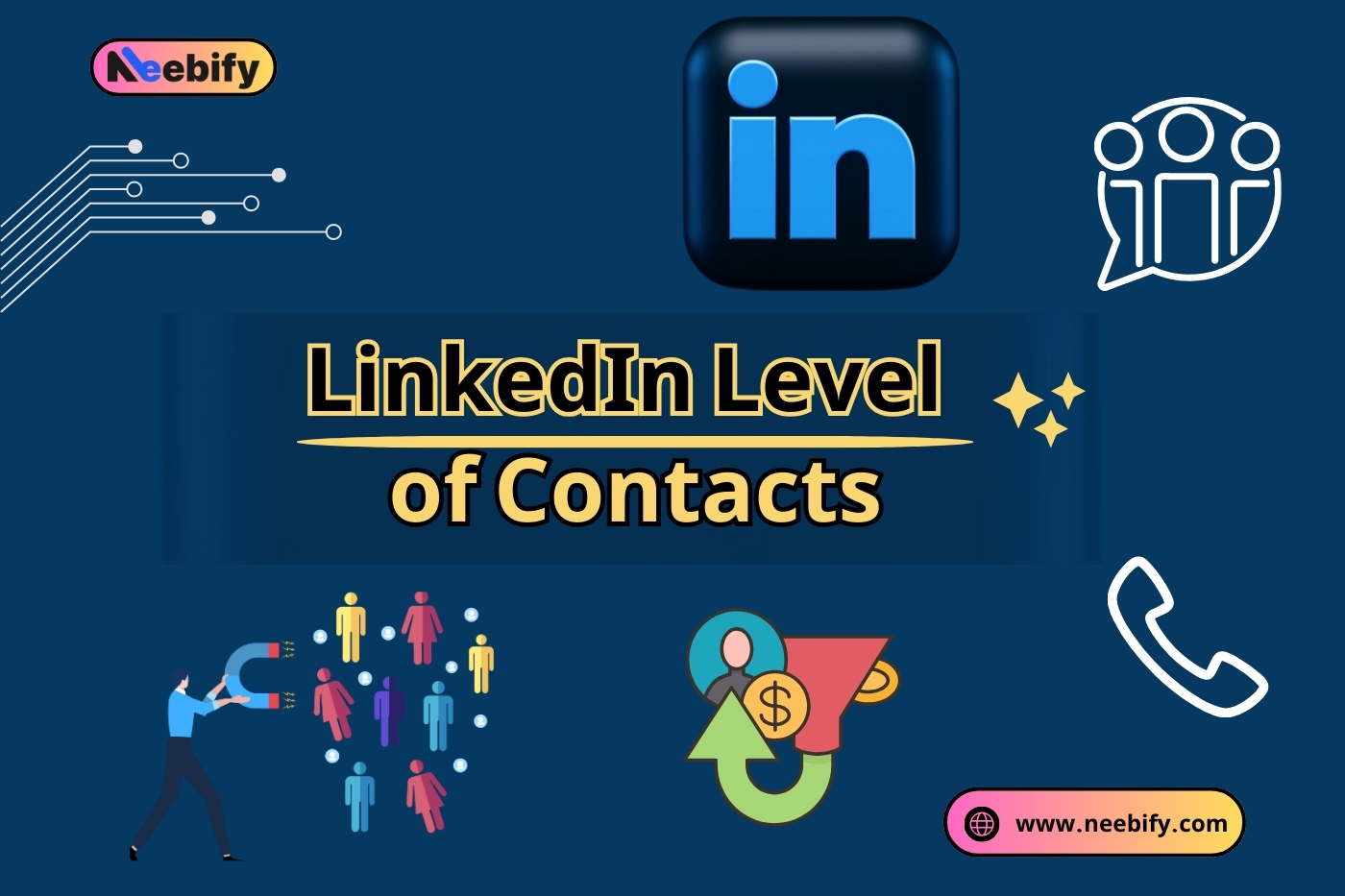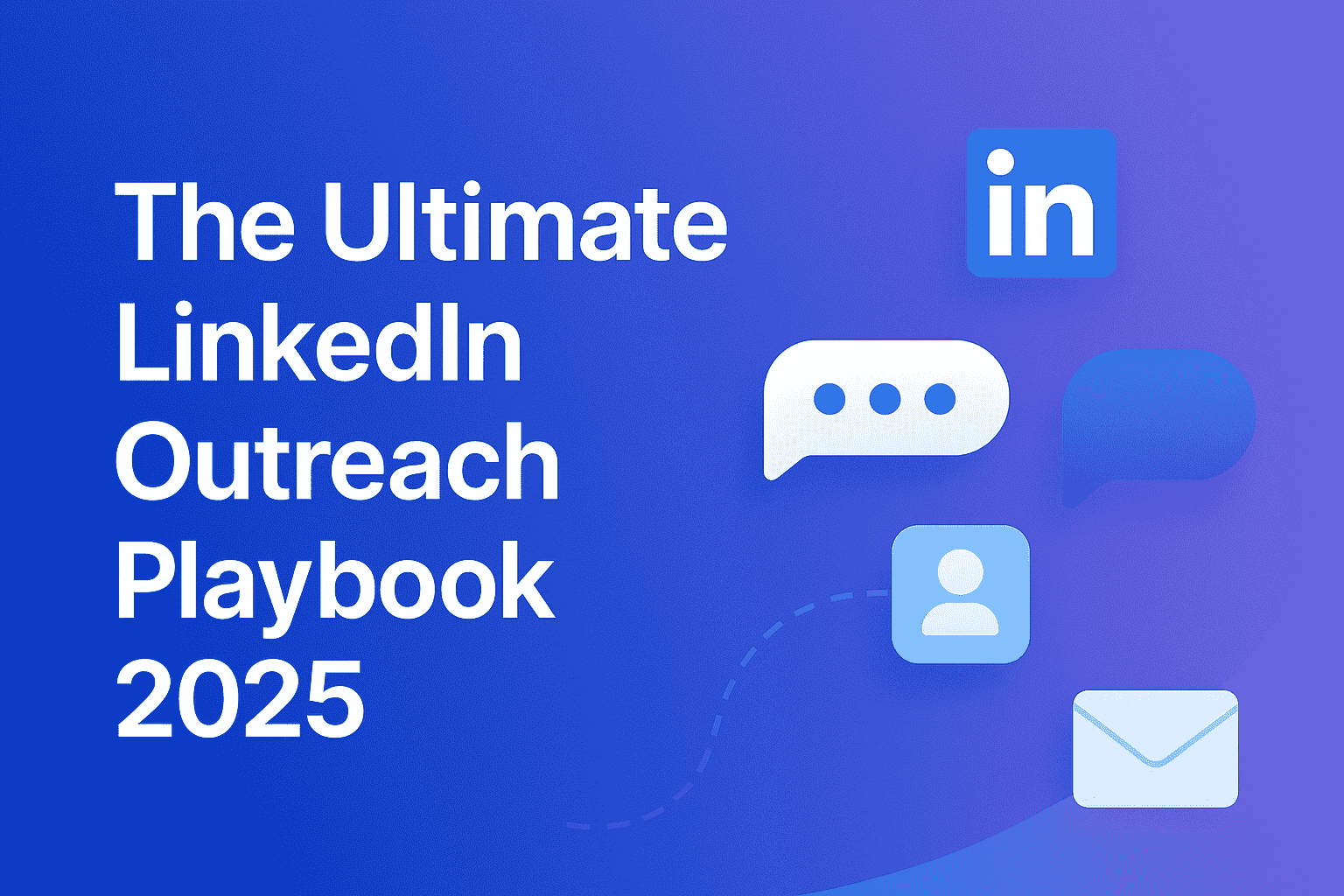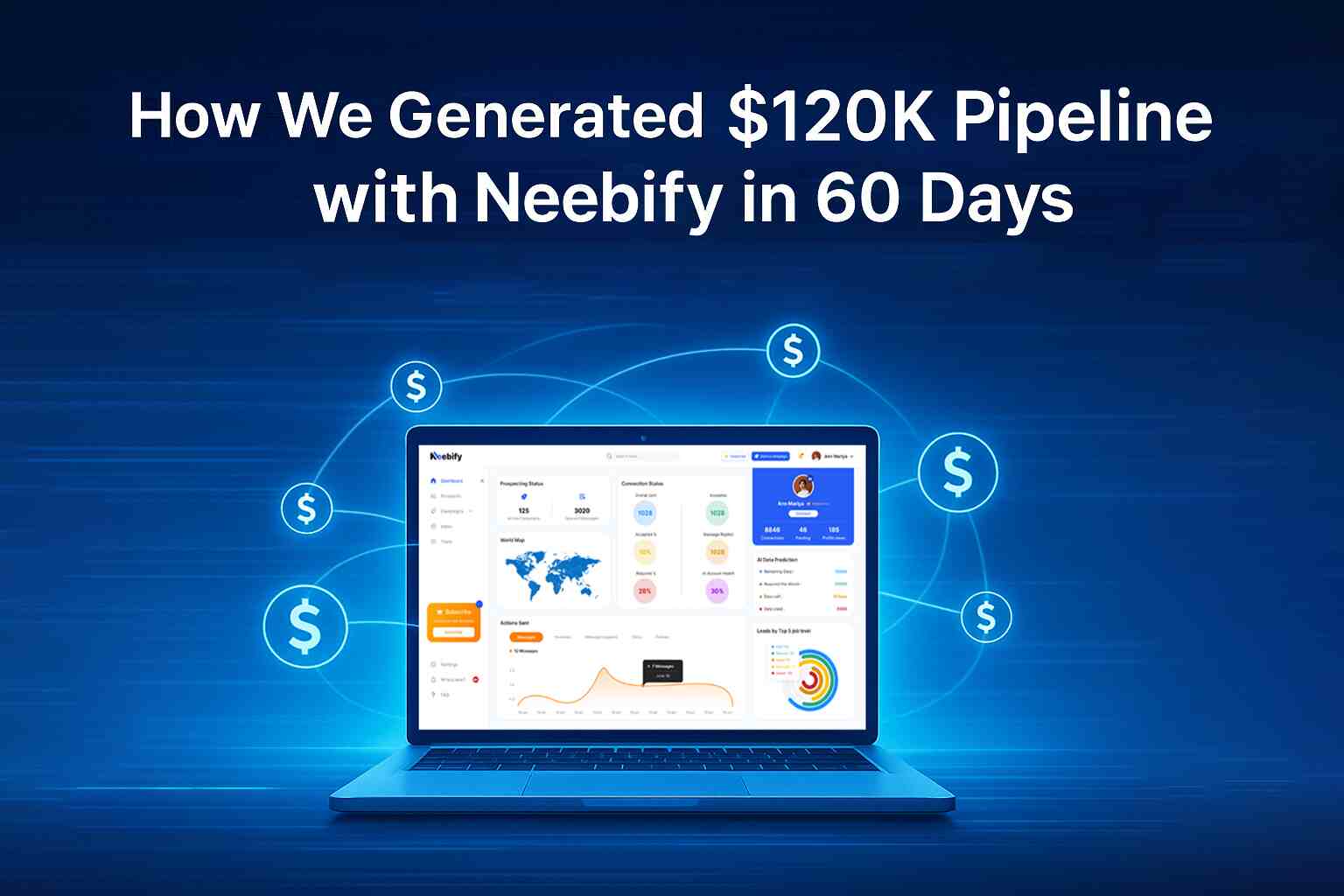Table of content
LinkedIn is the largest professional networking site, with its user base allowed to connect with others in building a professional network, new job discoveries, and the display of skills and expertise. Of course, what differentiates LinkedIn from all other social networks is the systematic way it allows users to form connections. It organizes your professional relationships into several categories, often termed degrees of connections.
Understanding these levels is important because it dictates how you interact with others on LinkedIn, who you can reach out to directly, and how you expand your professional network. Contact levels provided by LinkedIn give users an idea about how connected they are to a particular individual within the network. The closer you are, the better it is to connect, collaborate or network professionally.
Types of LinkedIn Level of Contacts
LinkedIn categorizes contacts into "three primary levels" (or degrees) based on the directness of the connection between you and that person: 1st, 2nd, and 3rd-degree connections. It also recognizes "followers" and "group members" as two categories that blur over the connection degrees.
Now let's take a closer look at each type of LinkedIn contact level:
1. 1st-Degree Connections: On LinkedIn, your "1st-degree connections" are people you are connected to. This means that either you sent a request or they did and accepted your connection. Once you two are connected, you are free to do what you like with the connection. This can include direct messages, going through the entire view of their profile, endorse skills they may hold in their profile, and interact with their posts.
Important features of 1st-degree connections:
Direct Message: You can message them without requiring LinkedIn's InMail feature.
Visibility: Posts and updates from 1st-degree connections are more frequently displayed on the feed.
More engagement: You can comment, like, and share their posts and they can do the same with yours.
I would describe building a good list of 1st-degree connections as the first step towards a strong LinkedIn presence. Most of your 1st-degree connections will be your colleagues, employers, business partners, and close acquaintances. The strength of your professional network can be valued through the relevance, quality, and mutual benefit of your 1st-degree connections.
Friends of Friends: Your "friends of friends" include those people who are somehow connected to your first-degree connections, but they do not know you. In simple words, they are "friends of friends." You cannot send them messages unless you pay LinkedIn the right to send messages to them as InMail (except in cases where a group is involved and you and the recipient are both members of it). But you can like and even comment on their posts.
2. 2nd-degree connections: Your 2nd degree connections are those persons connected with your first degree connections but you are not. Another word to use here is that they are “friends of friends.” You cannot send them a direct message without using the InMail feature by LinkedIn, or if the individual is in a connected group, you can still view their posts, like their updates, or comment on them.
Key characteristics of 2nd-degree connections:
Low involvement: You can see their posts in your stream and even comment on them. You won’t, however, be able to send each other a direct message unless they follow you or you use InMail.
Expansion opportunity: In fact, 2nd-degree connections are one of the best extensions of your network. If you encounter an important professional that falls under your 2nd-degree connections, you can invite him to one of your 1st-degree contacts.
You can often see fragments of their profiles if one’s visibility is restricted based o their privacy settings, but you cannot see 1st degree contacts information
Building connections at 2nd degrees is a great idea for those who want to further expand their network in specific industries or for certain interests. Such connections are relatively easier to approach because they have mutual contacts, and so they are more liable to accept a connection request.
3. 3rd-Degree Connections: 3rd degree connections are one more step removed from you. These are people that have a relationship with your 2nd degree contacts. Therefore, you do not have any direct or indirect relationship with them save through a chain of mutual acquaintances.
Key features of 3rd degree connections
Profile visibility is restricted: You see only an incredibly tiny portion of their profile that is limited to the headline and location of the person unless they have profile settings that permit everyone to see more of your profile.
InMail required: You cannot send direct messages to 3rd level connections outside of LinkedIn, but you can outside of that service with an InMail or through being a member of the same LinkedIn group.
Connection reachability: If you find a 3rd degree connection that's going to be valuable to your network, you can send them a request. However, do note that LinkedIn limits the connection requests you can make on any given day to help prevent spammy behavior.
3rd levels of connection: These groups represent the largest cohort of unexploited potential in your network on LinkedIn. While it is more challenging to reach them initially, if approached appropriately, they could hold opportunities for new partners, alliances, and collaborations.
4. Followers: Followers are users who opted to follow your updates and posts but have not connected with you directly. The followers will be able to see the updates, posts, and articles in their feed like your connections, but you can't send them a direct message unless they are your connection or in the same group.
Main features of followers:
Content visibility: Your posts, articles, and updates are visible to your followers, but you cannot interact with them as you might if they were 1st degree connections unless you follow them back.
A wider audience: Followers are most often used by Influencers, thought leaders, or content creators if they want to expand their audience beyond their network without having to connect personally with everyone.
No messaging: You will not receive any direct communication from followers except they start a message to you or in a group of yours on LinkedIn.
Having followers is a fantastic way to amplify your presence on LinkedIn without overcrowding your personal network. The more iconic you become, the greater would be the interest for professionals to follow your activity to stay abreast of your insights.
5. Group Members: Another important level of contacts in LinkedIn is the group members. LinkedIn allows users to join groups of people interested in their area, industry, or professional objectives. Therefore, group members constitute other people with whom you are aggregated together though they may not feature among your 1st, 2nd, or 3rd-degree connections.
Key characteristics of group members:
Shared interest: Being in the same group therefore shows that you and the other members are sharing common interests, topics or professional goals.
Messaging capability: Through LinkedIn, it is possible to message other members of a group even though they do not have to be 1st-degree connections. This could be an excellent way of networking.
Limited profile access: You might not gain access to the full profile details but membership in groups can serve to bridge gaps by making it easier to network.
One of the most powerful ways to connect with professionals in your industry and to grow your network without necessarily relying on direct connections is via LinkedIn groups.
Why is LinkedIn Levels of Contacts so important?
Knowing the different levels of contacts in LinkedIn is so important for proper navigation and using it to its full advantage. Here's why:
1. Networking Strategy: If you knew with whom you were connected, you might be able to tailor your connection requests much better. For example, noting how you are connected to someone makes all the difference between getting someone to accept your invitation and not.
2. Targeted Outreach: Understanding degrees of separation allows you to identify which of those in your larger network might be able to introduce you to that key hiring manager or client you want to reach.
3. More Connections: The more people you connect with, the more leads or avenues you open for your network. Connecting with several 2nd and 3rd-degree contacts expands your reach further in terms of job opportunities, potential clients, and partnerships.
4. Visibility of posts: Sometimes, connections can influence who will view your post and how it is shared. Engaging with 2nd and 3rd-degree relationships may help you expand the share of your post dramatically.
5. Professional Influence: The working of followers will help one grow their influence on LinkedIn. It will be attractive and increase a professional presence when one attracts followers interested in content, though the followers do not necessarily want to connect directly.
Conclusion
LinkedIn's structured system of "1st, 2nd, and 3rd-degree connections," combined with followers and group members, offers a unique and strong networking environment. Understanding the various levels of connection on LinkedIn is crucial in getting the best out of your networking on the site.
Your 1st degree connections can be strategically expanded. Connect with your 2nd and 3rd-degree contacts, leverage followers and group members, which, consequently, can unlock new career opportunities and more collaborations as well as professional growth.
Get your next meeting in a
matter of minutes.
Free Trial
Latest
The Ultimate LinkedIn Outreach Playbook 2025
A practical, modern guide to mastering LinkedIn outreach in 2025 — learn how to boost reply rates, p
12/1/2025How to Find 100 ICP Leads Without LinkedIn Sales Navigator
Generating 100 targeted ICP leads doesn’t require LinkedIn Sales Navigator. Learn how to leverage fr
11/28/2025


